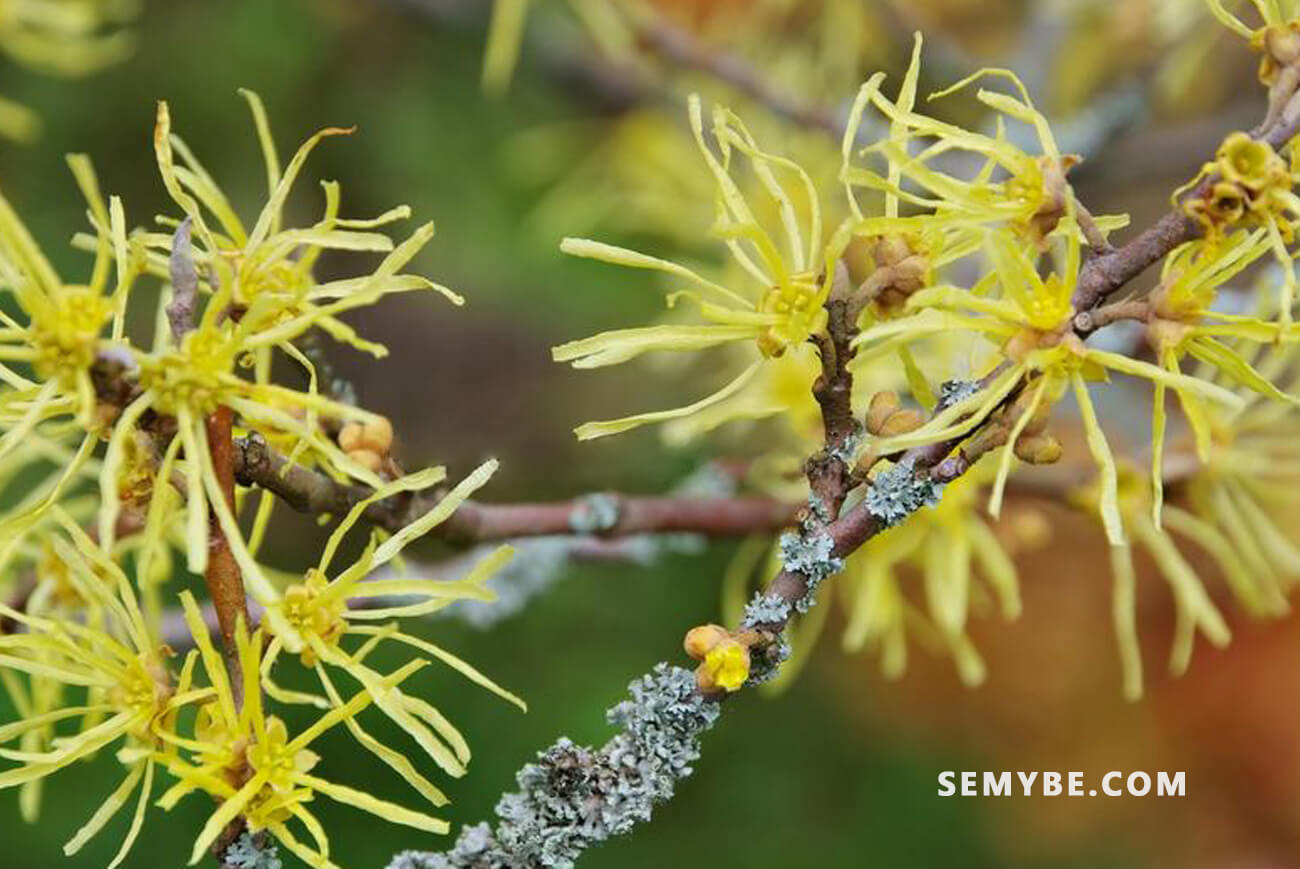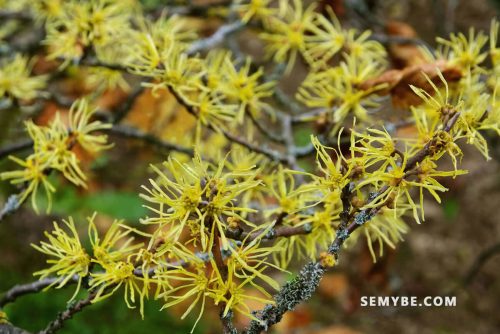
Hamamelis Virginiana
1. History and use
Witch hazel is native to Canada and the eastern United States Today it is commonly found in Europe II grows from marcots or sowing, made in autumn. The leaves are harvested in summer and dried in the shade as quickly as possible. Witch hazel has been used since time immemorial by the shamanic doctors of the Indian peoples of North America, who used it to treat many inflammatory problems, for its ability to stop the haemorrhages and to remedy the too abundant rules.
The Europeans discovered witch hazel during the colonization and imported it on their continent during the eighteenth century. They used it mainly for its astringent virtues, and we find today this shrub everywhere on the Old Continent.We are also using witch hazel in homeopathy. The properties of witch hazel are similar to those of red vine, which is why these two plants are often associated in the preparations.
2. Description of the plant
The family Hamamelidaceae up to 10 m tall, however its average size is generally between 3.5 and 6 m, its leaves slightly downy are oval and a dark Witch hazel is a shrub of green color. In autumn, its leaves become bright yellow, and its small flowers usually form in autumn just before its leaves fall in. They are yellow in color and emit a pleasant scent. Witch hazel contains astringent tannins (catechins and gallic) in large quantities, as well as flavonoids. The regulating properties of the venous circulation of witch hazel are due to rutin, which has vitamins P, which have the capacity to protect a venotonic action, and the walls of the veins. The witch hazel also contains mucilages and saponin.

3. Curative action
- Dermatology
Witch hazel is very useful for treating dermatitis and dermatosis such as eczema Mainly used in the treatment of benign skin lesions, it helps to protect the bruised areas and prevent infections.
- Venous conditions
Precious in the treatment of rosacea, varicose veins and haemorrhoids, it is also an effective remedy against bruises Its astringent properties make it a tonic and a venous protector.
- Other uses
Applies as a lotion for deeper conditions, such as cysts and tumors, is also very effective in eye baths, in cases of eye infections More rarely used by internally, it relieves diarrhea disorders, tones the intestinal mucosa and treats all types of hemorrhages.
It is recommended in general witch hazel to treat heavy legs and hemorrhoids.Its action on varicose veins and phlebitis is it also recognized.
4. Uses
In infusion, drink a maximum of 3 cups a day (one teaspoon of witch hazel leaves per cup, infused for about 15 minutes).
For the mother tincture of witch hazel, the recommended dose is 3 or 4 ml 3 times a day.The dosage is the same for the essence of witch hazel.
In capsules, take 1 to 3 times a day at the time of the meals Do not exceed the dose of 6 capsules per day.
To prepare a decoction of witch hazel, dip the leaves (30 g per cup) in cold water, then bring to a boil for fifteen to thirty minutes, then let your preparation rest for one night and drink it during the day.
For external use, also use young twigs and pieces of bark in your decoction at a dosage of ten grams for a quarter of a liter of water and apply the cold preparation to the skin or with a compress.




